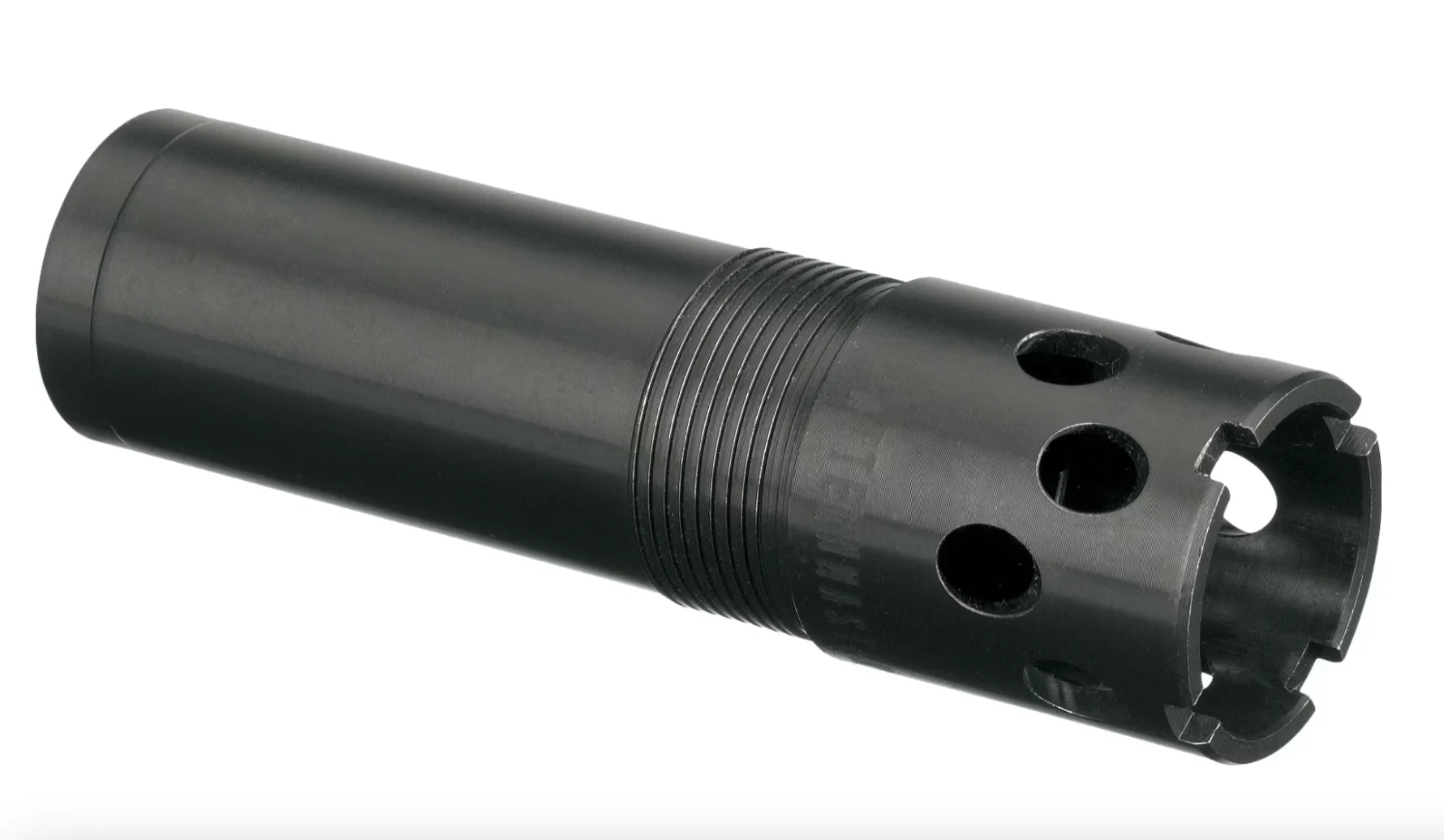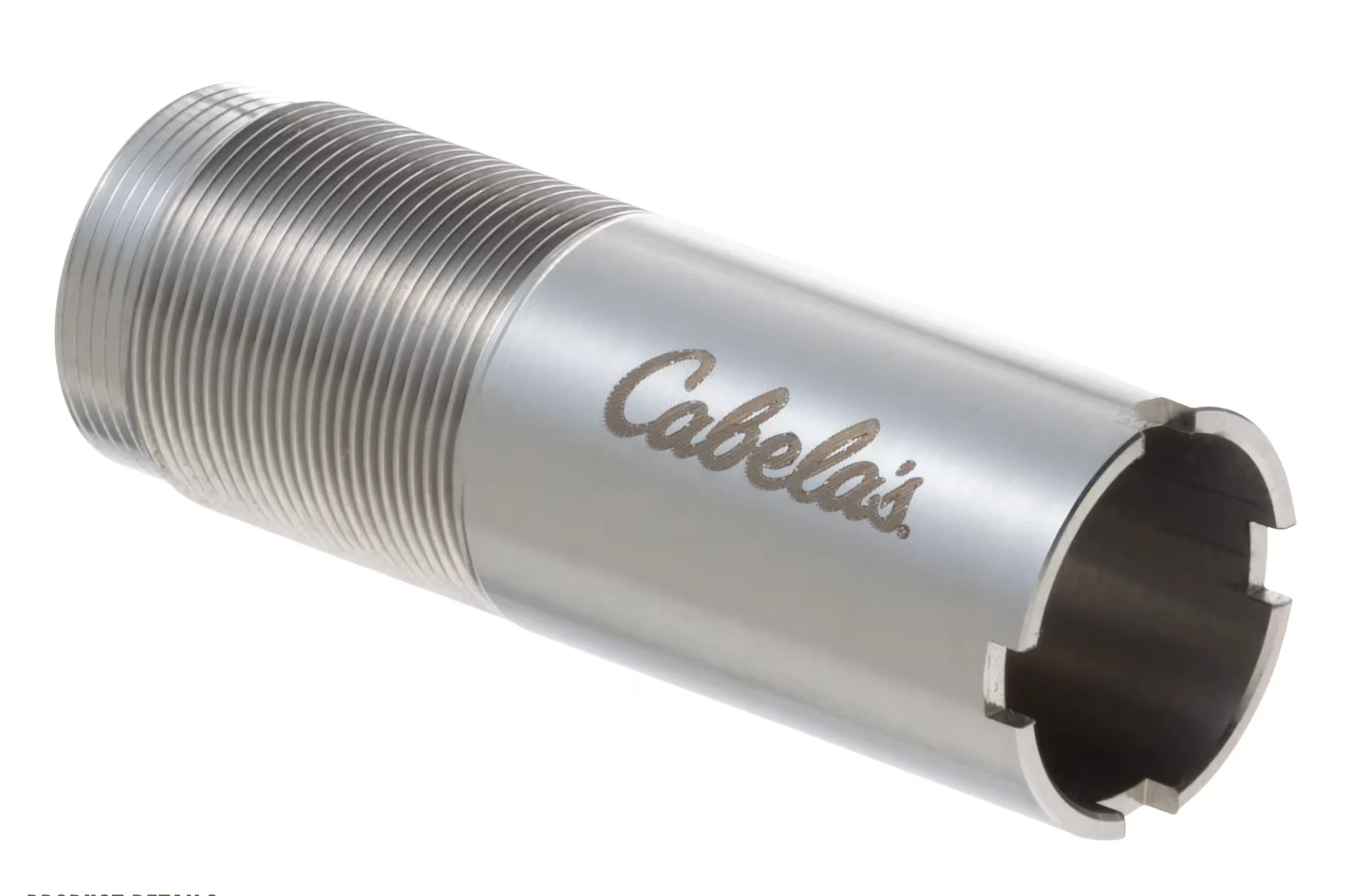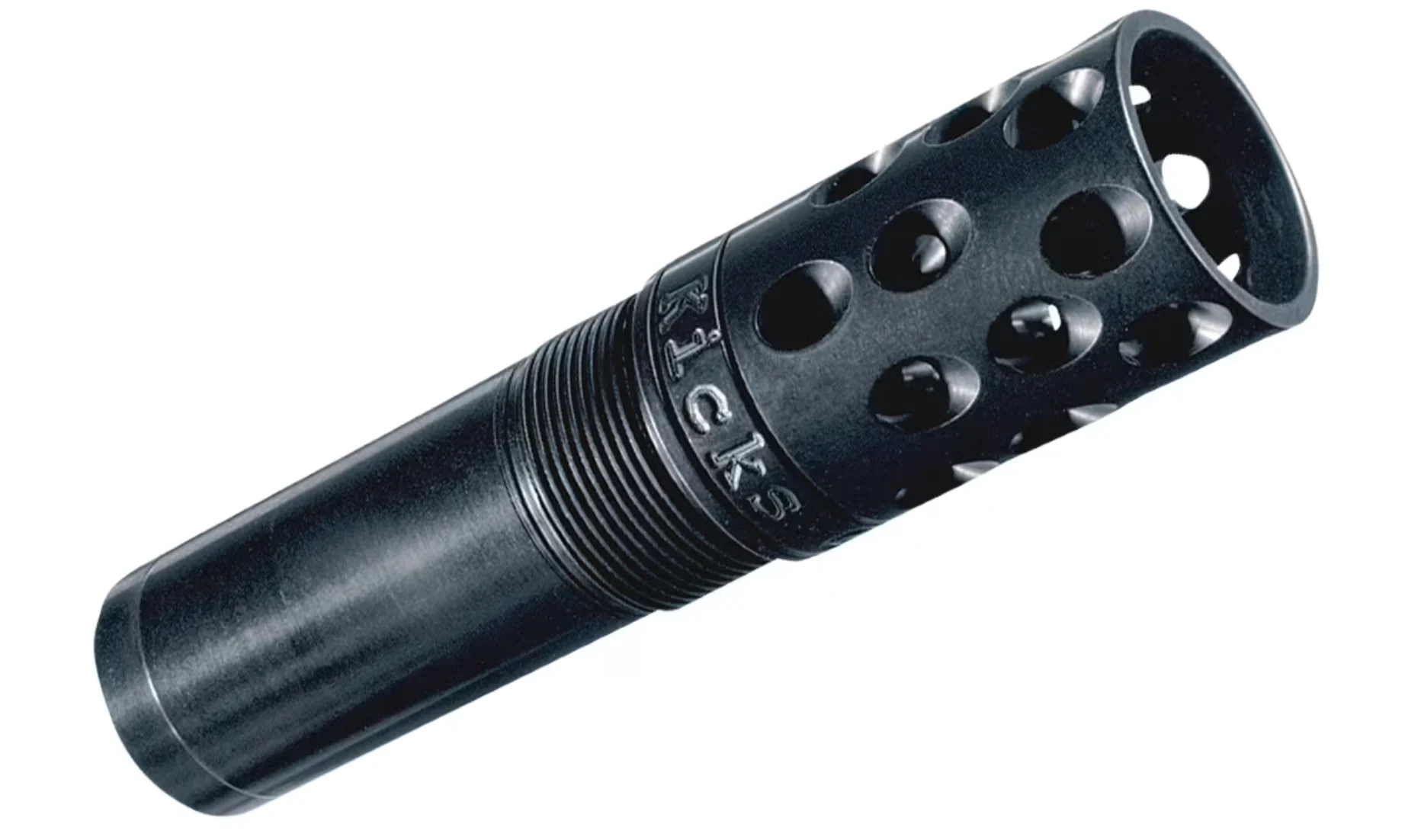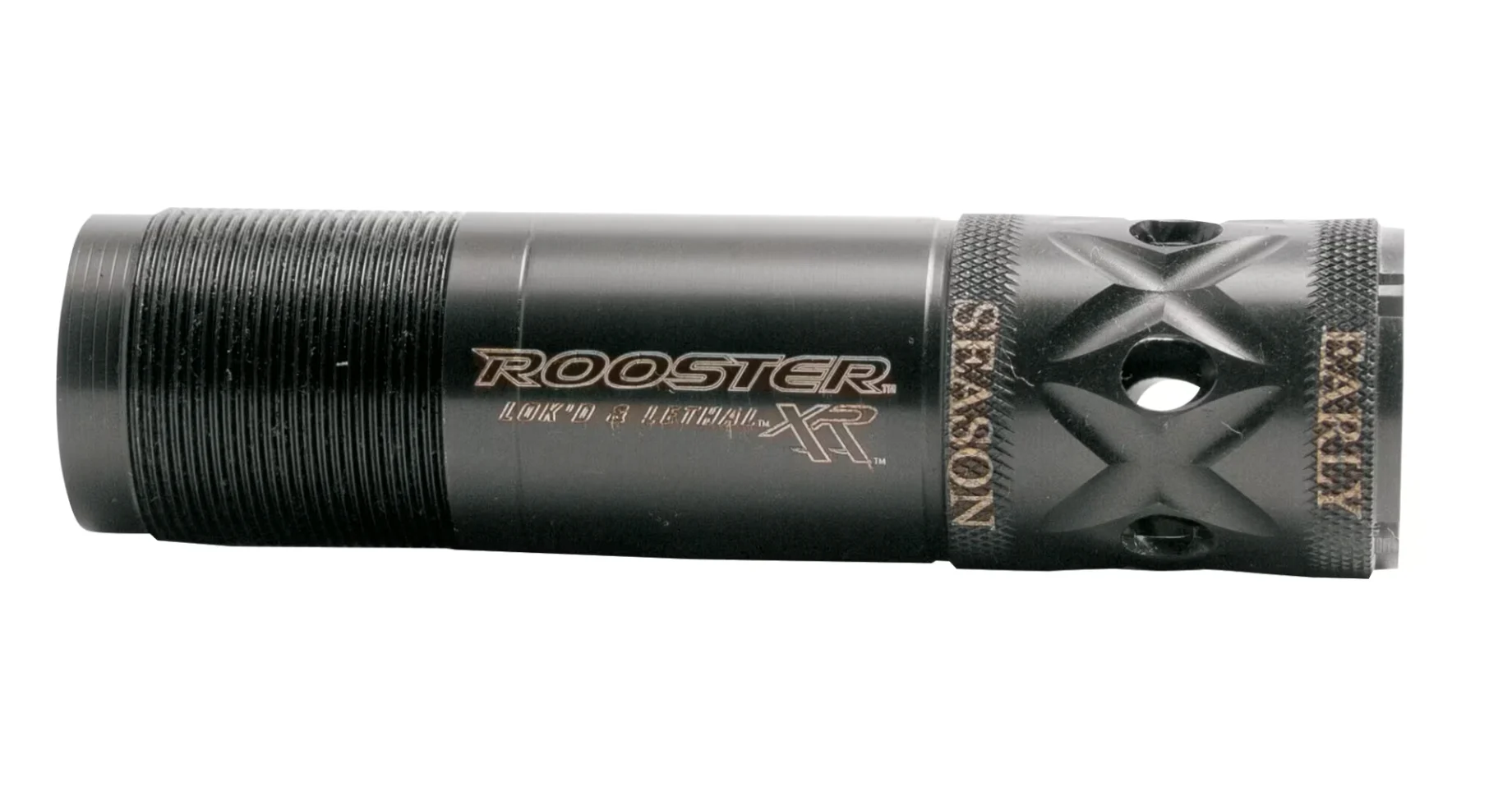The right choke for pheasant hunting will help you put enough pellets in a ringneck’s vitals to drop the bird immediately. Pheasants are big, tough birds, often shot going away, at distances varying from in-your-face to the edge of your shotgun’s range. It’s critical that your shotgun, choke, and load deliver enough pellets to the bird to kill it cleanly, as a crippled pheasant can elude even the best dogs sometimes. You need a pattern that is broad enough to make it easy to hit the bird, and with enough pellet density to put the bird down for keeps without ruining meat. That seems like a tall order, but the best choke for pheasant hunting can do the job.
Best for Long-Range: Patternmaster
Best Budget: Cabela’s Choke Tubes
Best for Medium Range: Kick’s High Flyer
Best Ammo-Specific: Carlson’s Rooster XR Choke
Best for Non-Toxic: HeviShot Choke Tube
How We Picked The Best Pheasant Hunting Chokes
Years of pheasant hunting have proven to me what tough birds wild ringnecks can be, and how important it is to hit them with the right pattern. Years of shooting, testing and patterning shotguns, chokes, and loads have shown me what to look for in a choke tube. That includes:
Tolerances: The best choke tubes for pheasant hunting are made to tight tolerances, so you know when you buy one you will get the constriction that’s marked on the tube. Typically an aftermarket choke tube will be more precisely made than an OEM factory choke will be. It only takes a few thousandths of an inch to alter the size of a pattern.
Design: The internal geometry of a choke matters too. Longer choke styles typically have a conical section that tapers down to the desired size, and a parallel section that stabilizes the payload after it pushes through the choke. Remember that shot doesn’t stream out of the barrel. It travels in a slug-like mass and has to squeeze through the choke which can cause a payload to scatter like billiard balls after a break. The parallel section helps them recover.
Other features: Ported tubes do help slow the wad down, allowing it to separate cleanly from the shot charge, and most of the tubes here are ported models. However, the ports will eventually attract plastic fouling, which adds an extra step to cleaning your gun.

Best Pheasant Hunting Chokes: Reviews & Recommendations
Best for Long-Range: Patternmaster
Why It Made the Cut: Patternmaster’s unique design is famous among waterfowlers for the tight patterns it produces, and its wad-stripping design works just as well in the uplands when pheasants flush at long distances.
Key Features
Materials: Matte black stainless steel
Gauges available: 12
Style: Extended, ported, with wad-stripping studs
Pros
Wad-stripping studs produce tight patterns
Versatile design handles lead, steel and buckshot, too
Available in extended and long range models for wild flushing birds
Cons
Expensive
Where most chokes vary patterns by tapering down to a certain amount of constriction, Patternmaster bills its chokes as “constrictionless” and uses a series of milled studs inside that grab the plastic wad and help it separate cleanly from the shot charge. The unique design works well, especially for long-range patterns.
Best Budget: Cabela’s Choke Tubes
Why It Made the Cut: A wide choice of constrictions at a very low price make these tubes tough to beat.
Key Features
Materials: Stainless steel
Gauges available: 12 and 20
Style: Flush mounted
Pros
Unbeatable price
Wide choice of constrictions in 12 gauge
Flush mounted for classic look
Cons
Not available in all gauges or for all choke systems
No extended versions available
Cabela’s Choke Tubes come in constrictions from pure Cylinder bore (the most open choke) all the way to constrictions better suited to turkeys than to pheasants. You should be able to find the right choke to shoot the patterns you need, and the flush mount gives a neat appearance to any gun.
The Cabela’s chokes are made for the four of the most popular choke systems—Beretta/Benelli, Invector/Browning/Mossberg/Winchester, Browning Invector Plus, and Remington—but hunters who own Benellis or Berettas should contact customer service prior to ordering, because the website doesn’t distinguish among the various systems those companies have introduced over the years.
Best for Medium Range: Kick’s High Flyer
Why It Made the Cut: High Flyer tubes use a combination of constriction and wad-stripping ports to produce good patterns.
Key Features
Material: Blued steel
Gauges Available: 12 gauge
Style: Extended, ported
Pros
Combines wad-stripping and traditional constriction styles to improve patterns
Comes in different constrictions
Reasonably priced compared to other high-performance chokes
Cons
Available only in 12 gauge
Kick’s High Flyer chokes are extra-long to accommodate a lengthened parallel section that both strips the wad and stabilizes the shot charge after it passes through the constriction. The result is an excellent pattern without interference from the wad disrupting the payload as it exits the barrel.
Best Ammo-Specific: Carlson’s Rooster XR Choke
Why It Made the Cut: Designed and patterned with Winchester’s excellent Rooster XR ammo, this choke delivers good patterns with other pheasant loads, too.
Key Features
Material: Blued stainless steel
Gauges Available: 12 gauge
Style: Extended, ported
Pros
Optimized for Rooster XR loads
Patterns well with lead and steel
Comes in Early Season and Late Season constrictions
Cons
Comes in 12 gauge only
Carlson’s load-specific Rooster XR choke tubes are built to a high standard and tested extensively with their namesake load to insure good patterns with it. The Early Season choke is a Light Modified choke—an excellent choice for mid-range shots—while the Late Season tube has a tight Improved Modified constriction. That’s just short of Full choke, for longer shots later in the year.
Best for Non-Toxic Shot: HeviShot Choke Tube
Why It Made the Cut: Designed for waterfowl hunters, these tubes enable pheasant hunters in non-toxic zones to shoot deadly patterns with eco-friendly, hard-hitting tungsten-iron HeviShot.
Key Features
Material: Matte blued stainless steel
Gauges Available: 12 gauge
Style: Extended, ported
Pros
Great choice for non-toxic zones
Knurled, extended chokes are easy to hand-tighten and change
Takes the guesswork out of choosing a choke for HeviShot or steel
Cons
12 gauge only
Some of the best pheasant hunting is found in areas limited to non-toxic shot. HeviShot is ideal ammo for those places, and it’s a great pheasant load no matter where you hunt. These chokes will shoot optimal patterns with steel and HeviShot, which work best when choked differently from lead. They come in mid- and long-range versions, and have been test-patterned extensively with non-toxic ammo.
Things to Consider Before Buying a Choke Tube for Pheasant Hunting
The first step when shopping for choke tubes is to think about where, when and how you hunt pheasants. The hunter who goes alone and shoots over a pointing dog takes different shots than hunters who conduct drive-and-block operations. Under some conditions, pheasants sit tight and flush close no matter how you hunt them. Other days, they take flight at 30 yards or more. Knowing the distance of your average shot will help you pick the right choke constriction. In my experience, most hunters are good shots to 30 yards and struggle at longer ranges. Also, most pheasants are shot from 15 to 25 yards. A more open choke, like an Improved Cylinder, usually suits most hunters better than a very tight constriction.
Extended or Flush Mount Chokes
Extended shotgun chokes protrude beyond the muzzle up to an inch. They are very popular with sporting clays shooters because they are easy to change quickly and don’t require a wrench to do so. In some cases, the extra length of an extended choke can improve pattern performance, most often when guns are threaded for older, very short choke tubes like the original Winchoke/Invector/Mossberg Accu-Choke style. Then the added length of the extended choke helps stabilize the shot charge. Extended chokes are also good for using with hard steel shot, as any potential damage caused by the shot will occur to the choke tube and not your shotgun’s muzzle.
Flush-mounted chokes are often preferred by traditionalists who don’t like the idea of an extended choke ruining the lines of a classic bird gun. A flush-mounted choke also makes the gun a little more compact.
Ported or Non-Ported Chokes
If you choose an extended choke, you will then have the choice of a non-ported choke, or one with ports milled into the extending portion to vent expanding gasses. Manufacturers make a lot of claims for ports, saying they reduce recoil and muzzle rise. If they do, it’s only very slightly. Ports, though, help slow the wad down as it passes through the choke, allowing the wad to separate cleanly from the shot charge, often resulting in better patterns. On the downside, plastic fouling can build up in ports after many rounds, adding another gun maintenance chore.
Type of Ammunition
Be sure the choke you buy is approved for the type of ammunition you will shoot. Some chokes are designed for lead shot only, and may be damaged by hard steel or tungsten-iron pellets.
In addition, some choke makers design tubes for specific loads. They will work with other types of loads, but they have been test-patterned and optimized for use with specific popular pheasant loads. If you have a favorite shell and can find a choke for it, selection becomes much easier.
FAQs
Q: Can you shoot steel shot out of a Full choke tube?
A: You can shoot some, but not all steel shot loads out of a Full choke tube. Because it is not soft and malleable like lead, steel shot doesn’t flow through choke tubes easily, and it can damage a Full choke. However, that applies primarily to large sizes of steel, like BBs. Shot sizes No. 2 and smaller will shoot out of most choke tubes rated for steel with minimal chance of damage, and they can shoot excellent patterns. The one exception might be turkey chokes, which are so small at the muzzle end that even small steel might give you problems.
Q: Are extended chokes better than flush choke tubes?
Extended chokes are better than flush choke tubes in that they’re easier to change, and you can tell at a glance which choke you have in your gun. They can improve patterns over old, shorter flush-mounted chokes like the Winchoke/Standard Invector/Accu-Choke tubes and older RemChokes, but don’t necessarily perform better than longer flush-style chokes that have mostly replaced shorter styles. The final advantage of extended tubes is that any stresses from firing large steel pellets occur beyond the muzzle of the gun, further reducing the chance of damage to the muzzle. Some hunters prefer the cleaner look of a flush-mounted choke, and many of the current longer flush choke models deliver excellent patterns.
Q: What shotgun choke has the tightest pattern?
The shotgun choke with the tightest pattern is, up to a point, the choke with the greatest constriction. Typically, chokes made for turkey hunting shoot the tightest patterns, at least with small shot. While those chokes are ideal for putting a swarm of pellets on the very small vital area of a turkey’s head and neck, they are too tight for wingshooting because they make it easy to either miss or tear up game. For pheasant hunting, a Full choke or a long-range model like the Patternmaster usually shoots the tightest patterns, but choke is only part of the equation. You will need to test-pattern the choke by shooting at a large sheet of paper with the load you plan to use in the field, to be sure the gun is providing a good pattern at long range. Most often, a more moderate constriction is best for pheasant hunting anyway.
Q: Is a Modified choke tighter than an Improved Cylinder?
A Modified choke is tighter than an Improved Cylinder choke. Known as “half choke” in the UK, a Modified choke will have .010 more constriction than an Improved Cylinder and should shoot tighter patterns with most loads. Generally speaking, a Modified choke will put about 60% of a shot charge or a little more into a 30-inch circle at 40 yards, while an Improved Cylinder should put about 50% of the payload into the 30-inch circle. These are only ballpark numbers. As always, you need to test your own gun, choke and load. Also, don’t jump to the conclusion that a tighter pattern is always better. Shot spreads as it leaves the muzzle, and at closer ranges, a more open choke provides a slightly broader pattern that makes it easier to hit birds.
Final Thoughts on the Best Pheasant Hunting Chokes
The best pheasant choke for you depends on what shotshells you prefer. Any choke you choose will perform well with some loads and not as well as others. The only way to know is to pattern it in your shotgun. A good quality aftermarket choke can improve patterns over some factory choke systems. They will be made to tighter tolerances than factory tubes as well.
No matter which choke you buy, remember that choke is part of a three-part system of choke, load, and gun. Different ammunition and different internal barrel dimensions can also alter patterns. You will have to test any choke you buy to be sure it’s the best choke for pheasant hunting.
Why Trust Us
For more than 125 years, Field & Stream has been providing readers with honest and authentic coverage of outdoor gear. Our writers and editors eat, sleep, and breathe the outdoors, and that passion comes through in our product reviews. You can count on F&S to keep you up to date on the best new gear. And when we write about a product—whether it’s a bass lure or a backpack—we cover the good and the bad, so you know exactly what to expect before you decide to make a purchase.











